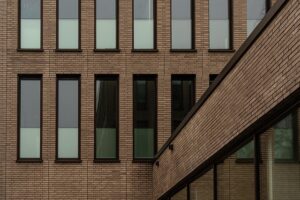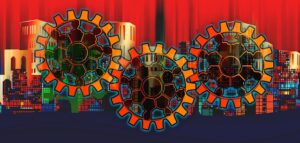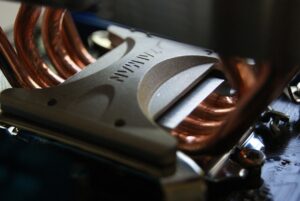Thermal stratification in large industrial spaces causes uncomfortable microclimates, impacting productivity and worker health. Industrial destratification fans combat this by vigorously mixing air, breaking up temperature hotspots, and promoting uniform cooling. Essential for factories, warehouses, and construction sites with high ceilings, these fans enhance operational productivity, reduce energy costs, and create safer working environments by eliminating hot and cold zones. Modern destratification fans feature advanced controls and heavy-duty capabilities, offering precise airflow management and efficient cooling across vast areas, contributing to both environmental sustainability and improved workplace conditions.
In industrial settings, efficient air mixing is paramount for optimal processes and worker comfort. This is where high-velocity industrial destratification fans step in as game-changers. Understanding destratification and its benefits, such as enhanced process efficiency and improved environmental conditions, is crucial. This article explores how high-velocity fans lead the charge in maximizing air mixing efficiency, delving into key features and applications of modern industrial destratification fans that drive success across diverse sectors.
- Understanding Destratification and Its Benefits in Industrial Settings
- The Role of High-Velocity Fans in Air Mixing Efficiency
- Key Features and Applications of Modern Industrial Destratification Fans
Understanding Destratification and Its Benefits in Industrial Settings

In industrial settings, understanding thermal stratification and its impact on operations is key. Thermal stratification refers to the vertical layering of air temperatures within a large space, often resulting in cold air being trapped at floor levels while warmer air remains above. This phenomenon can significantly affect worker comfort, especially in vast manufacturing plants or warehouse applications with high ceilings. By creating an uneven microclimate, it leads to inefficiencies and potential health risks for employees.
Industrial destratification fans are designed as a solution to combat this issue. These powerful devices maximize air mixing efficiency by aggressively circulating air throughout the entire space, breaking up hot spots and ensuring uniform temperature distribution. This is particularly beneficial in heavy-duty construction sites or large factory cooling applications where thermal stratification control is crucial for worker comfort improvement and energy cost reduction. Efficient destratification not only enhances operational productivity but also contributes to a safer and more productive industrial environment.
The Role of High-Velocity Fans in Air Mixing Efficiency

Industrial destratification fans play a pivotal role in enhancing air mixing efficiency within manufacturing plants and warehouses. These high-velocity fans are specifically designed to combat thermal stratification, a common issue in large spaces with high ceilings. By generating powerful air currents, they ensure even distribution of temperature and humidity, eliminating hot spots and cold zones. This is particularly crucial for worker comfort improvement and energy cost reduction.
In warehouse applications and heavy duty construction sites, where vast areas need to be maintained at optimal conditions, destratification fans are indispensable. Their ability to facilitate large space air circulation effectively reduces the risk of stagnant air, which can lead to decreased productivity and increased health risks. With their high-duty capabilities, these fans contribute to overall operational efficiency while promoting a healthier work environment.
Key Features and Applications of Modern Industrial Destratification Fans

Modern industrial destratification fans are designed to combat thermal stratification in large spaces, offering a plethora of key features for efficient air mixing. These fans are engineered for heavy-duty construction and can handle high ceiling spaces, ensuring optimal air circulation across vast manufacturing plants and warehouses. They incorporate advanced technologies like variable speed drives, allowing precise control over airflow, which is crucial for energy cost reduction and worker comfort improvement.
The applications of these destratification fans extend to various industrial facilities, including factories that require efficient cooling. Their unique design helps in breaking up stagnant air layers, enhancing heat transfer, and providing a uniform temperature distribution throughout the space. This not only improves overall working conditions but also contributes to environmental sustainability by reducing energy consumption associated with excessive cooling efforts.
In conclusion, high-velocity industrial destratification fans play a pivotal role in enhancing air mixing efficiency within diverse industrial settings. By understanding the benefits of destratification and leveraging modern fan technologies, businesses can optimize their operations, improve environmental conditions, and promote worker safety. These advanced fans are designed to efficiently disperse stagnant air, ensuring optimal performance and quality control across various industries. Incorporating industrial destratification fans into facility management strategies is a game-changer, offering both immediate improvements and long-term benefits for any manufacturing or processing environment.






